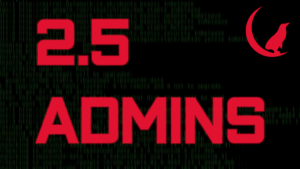
 2.5 Admins
2.5 Admins 2.5 Admins 221: Two Firewalls
Nov 14, 2024
Explore the fascinating world of charging tech as the hosts dive into the shift from USB-A to USB-C and the benefits it brings for travelers. Discover the complexities of managing firewalls in both IPv4 and IPv6 environments, along with the security challenges each presents. Gain insights into using ZFS effectively, akin to Git, for version control. Finally, learn about the essentials of hosting an authoritative DNS server and the critical role of rate limiting in protecting against traffic overloads and attacks.
Chapters
Transcript
Episode notes
1 2 3 4 5 6
Intro
00:00 • 5min
The Rise of USB-C and Power Banks
05:16 • 5min
Navigating Firewall Rules in the IPv4 and IPv6 Landscape
10:09 • 6min
Navigating Network Security: IPv4 vs. IPv6
15:46 • 7min
Mastering Authoritative DNS Hosting
22:52 • 7min
Understanding DNS and Rate Limiting
30:21 • 6min

